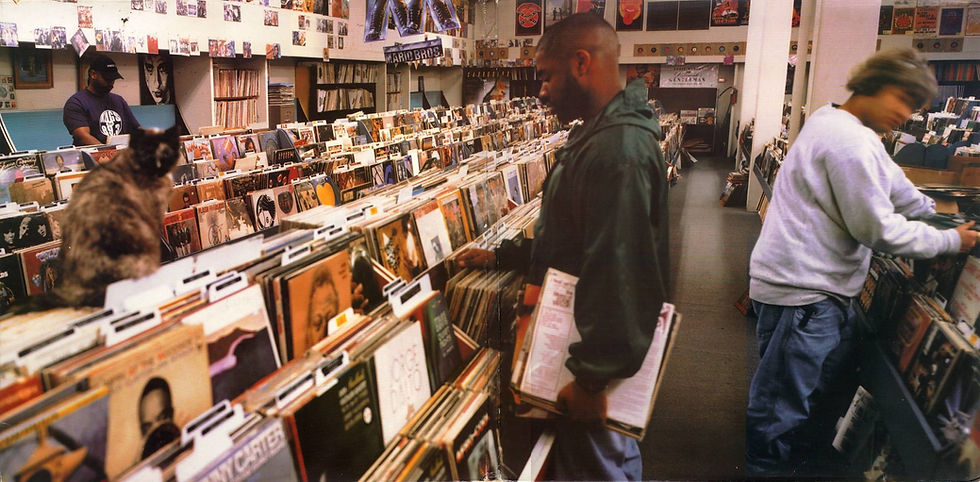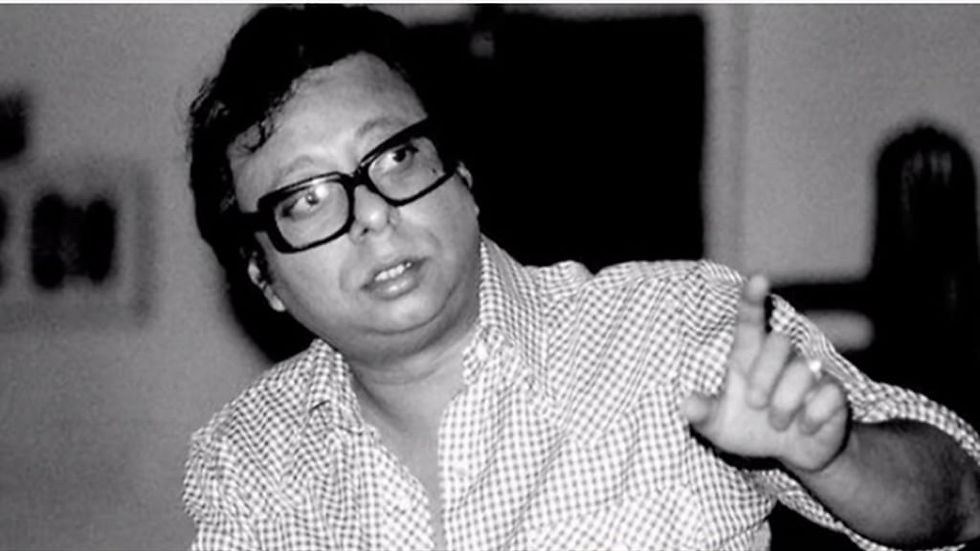The Producer's Ear
- Fahad Al-Amoudi

- Nov 7, 2020
- 6 min read

In Hip Hop, alchemy is everywhere and the art of sampling is no different. Sampling creates so many lively debates around interpolation, revision and intertextuality but at the heart of every pitch corrected soul run, every chopped up disco track or horn section is the producer’s ear. There is a reason why Darondo’s ‘Didn’t I’ or Dionne Warwick’s ‘You’re Gonna Need Me' is so widely sampled. Every producer, and by extension every artist, hears something different that they want to amplify or be in conversation with. Darondo’s ballad has been reimagined by Vic Mensa into one about family ties, Big Sean saw it a fitting end to Dark Sky Paradise and Aminé (prod. 9th Wonder) found use in it as somewhat of a swansong, a final cry to ensure he is dead before put to rest. It’s a lazy metaphor but sampling is a kind of Roarshack test. Music provokes, hopefully in a productive manner, and it inspires everyone to respond in their own unique way.

Pictured above- Rahul Dev Burman
Let’s take Rahul Dev Burman’s 1976 cut, ‘Dance Music’, as our case study. If you are familiar with Indian Cinema then you will know that Burman is one of the most prolific and well-respected composers of the 20th century. Coming from a musical family of superstars, Burman scored over 331 films, working with legends in the industry and cementing his place as an inspiration for future composers. Little did he know that his influence would reach a studio in California four decades after the song was made. But we’ll get to Madlib later.
For a self-proclaimed ‘Dance Song’, the original recording begins in quite a tempered manner, choosing to indulge in grand piano runs with the final journey down the keys leaving an uncertain taste before giving way to a gentle groove. The effect of Burman’s composition is that he evokes images. From the first note you can’t help but imagine yourself transported into the world of the song- whether you imagine colonial grandeur, a choir singing in elegy or an elevator in South America in the final section. Burman’s open palette drives the song, with the help of some phenomenal singers, who provide all the emotional complexities and unique voicings. If the song is not yet already familiar from the frenetic string sections or female vocals stretching their voices like Roman columns then it will become instantly recognisable at the two-and-a-half-minute mark as the sample in ‘Bonjour’ and ‘Education’, produced by Kanye West and Madlib respectively.
‘Bonjour’ and ‘Education’ could not be further apart. In sentiment, politics, feeling and delivery the two songs diverge and yet they are held together in comparison by the sample. Beginning with Nas and Kanye, it is clear that what they heard in Burman’s piece was the luxury of the composition. ‘Bonjour’ is nothing if not the re-contextualising of European high society and wealth to accommodate ‘new money’, particularly Nas’. This is black capitalism in its simplest manifestation with wealth accumulation and intergenerational wealth the central message. Nas is rapping about domination; it’s an image of inversion where Nas and his peers eat at the tables that have historically shut them out. His verse is a dance of avarice with a degree of self-awareness coming through. ‘I arrive bitches!’ Nas proclaims and it’s easy to understand why. The instrumental speaks to a Victorian gluttony- you can picture the table fittings, the high ceilings and all the tangible markers of an economy that is built on racial capitalism recontextualised by Kanye’s drums and, crucially, Nas’ verses. ‘Dance Song’ is not a colonial song and yet its texture lends itself so well to creating a song that reimagines elitist wealth.

Nasir, released in 2018
But there are two narratives happening within the song. Where Nas indulges in luxury rap, Tony Williams is lyricising a different kind of dance, one that involves two lovers trying to get each other’s attention. The speaker is trying to seduce the subject of his desire with physical affection, plein de bisous, engaging in furtive dialogue and indicative glances. Williams is trying to gauge the interest of the woman in question, waiting for the right move as she toys with his expectations. This is what Williams heard in Burman’s ‘Dance Song’ and choreographed a series of hooks and verses that illustrated the thrill of seduction. Coming in at three minutes and twenty-two seconds, there is a lot packed into ‘Bonjour’ and its impressive range can be credited to the emotional nuance and rich texture of the sample. The narratives never clash. Kanye’s use of the sample provides all the space necessary for Nas to build an image of his ‘black elite’ in the South of France while Tony Williams breaks off from the crowd, still in the dancing ballroom of Burman’s composition, to woo his beloved.
‘Education’, produced by Madlib, featuring Freddie Gibbs, Yasiin Bey and Black Thought, completely flips the register and tone of ‘Bonjour’ on its head, creating a song that seeks to find logic from disorder. Remember those ominous piano runs from Burman’s original? Madlib skilfully layers haunting vocals and with these unsettling dances down the keys to create a beat that questions what’s going on beneath the surface. ‘Education’- the clue is in the name. The beat encourages independent thought, to interrogate what the music is hiding and decipher the meaning of every movement of the ‘dance’. The verses reflect this. They focus on the things that venture into the realm of the surreal; the pocket of dissonance between accepted knowledge and dystopia. These are the bones buckling boots, goblins and Pharoahs emerging from prep schools, the sky in upside down land, Plymouth Rock in New Morocco, burning crosses like potholes. Yasiin and Tariq’s education and understanding of American capitalism, the school to prison pipeline and institutional racism has left them bitter, on the verge of burning it all down or leaving altogether. Who wouldn’t? But on the third verse, Gibbs gives the listener an ‘alternative’ understanding of education equipped with its full range of vernacular, cultural references and graduate goals. ‘Traponomics’- a fun and ironic play on Reaganomics, details Freddie’s learning and experience doing what he could to survive.

Once again, it is to the credit of the sample that allows ‘Education’ to be successful. Madlib even chose to include a brief sample from Burman’s 1993 Bollywood movie, Tadipaar, which roughly translates as, ‘Oh, Shakti, this is the first time you’ve said something useful’. It’s a bold statement at the beginning of the song, arrogant almost, but it serves to set the tone of the track. What Madlib, Yasiin, Black Thought and Freddie are trying to say is something ‘useful’, something that will cut at the heart of their reality. All their lyrical movements are precise, speaking a language that is part code, part vernacular. Where Nas and Williams are frivolous, Yasiin, Tariq and Freddie have carefully choreographed a dance with a far more subversive message.
The sample, when it is as prominent as it is in these songs, is such an important part of the composition. It is the wave on which the emotional message and narrative of the song is delivered. If the sample fails to capture the right tone or emotional register then the song will fall flat. But if handled well, as it is on ‘Bonjour’ and ‘Education’, then it can take any song to the next level. R.D Burman’s composition is exactly the kind of song you might expect Kanye and Madlib to sample but it doesn’t make their beats any less exciting. This is the mark of a great producer. They pick the songs that contain the emotional nuance and range to create defining compositions and have the skill to deliver on that potential. Just because two songs sample the same recording doesn’t mean they have the same beat. ‘Say I didn’t’ sounds nothing like ‘Burden’ because their producers recognised that Darondo’s original track was not just a one-dimensional ballad. It’s all about your ear. Questlove famously gave Dilla what he believed to be an ‘unsampleable’ Rick James song and the Detroit legend turned it into Common’s ‘Dooinit’. The best producers tune their ears to the harmonics of emotional register and lay them bare for their audiences to unpick.








Comments